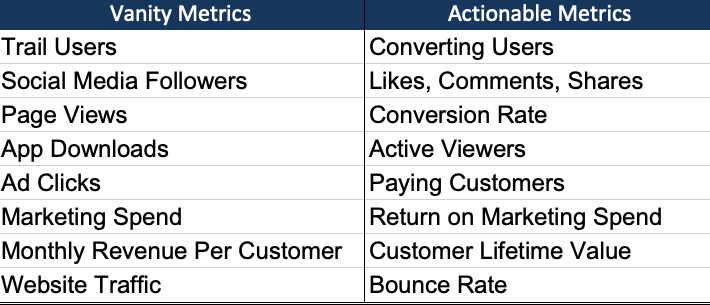Startup Founders Should Avoid Doing This Blunder At The Beginning

Most of the start-up founders presume that vanity metrics are the real actionable metrics and get stuck. When you start new, what matters is doing the right things at the beginning, unfortunately, 99% of business owners are not able to figure out what gets them cheque/paying customers and ending up wasting productive time and energy around vanity metrics, it doesn’t stop there, they jump on to Google, search for Startup Investors in Hyderabad, Venture Capitalists in Hyderabad, Angel Investors in Hyderabad and Business Investors in South India, find their email and shoot a pitch deck covered with full of vanity metrics, trust me, if you are doing this, you will never get a reply from any of the Business investors. Be informed, Startup Investors never pay attention to vanity metrics, before diving deep into the topic let’s touch the roots of it.
Understand The Difference Between Metrics and KPIs
A metric is a numerical measurement or evaluation related to financial performance, processes or events of some kind. KPIs are specific category metrics, KPIs help track against performance, objectives, and goals for a company, business function, or individual worker. Every KPI is a metric but every metric is not necessarily a KPI. When it comes to products and product features efficacy should always be measured using so-called success metrics including those products and product features that are built with advanced technologies like machine learning and AI.
Vanity Metrics (Non-actionable), Just A Trap
Vanity is defined as taking excessive pride in one’s appearance or achievements, similarly, in analytics, a vanity metric is data that perhaps looks good on paper and makes the website or app appear successful but that doesn’t say anything about how well it’s truly performing, vanity metrics tend to be ever-growing numbers like “377 billion served” sign at a McDonald’s. A stand-alone data point is impossible to interpret and is a clear warning sign of abandoning metric. Context is key, is it impressive that 10k people have downloaded your app and what if 8k of them never opened it again.

Actionable Metrics Are The Key
Some metrics are critical and they have to be actionable, the key is actually ability, actionable metrics help drive or at least inform decision making and taking actions, this is what makes actionable metrics matter, the opposite of actionable metrics are non-actionable metrics for what people often call vanity metrics, vanity metrics make people and companies feel good but unfortunately they don’t inform decision making. If a metric doesn’t change behaviour or cause something to be done differently then it is not an actionable metric and should probably be ignored.

Here are some of the specific differences between actual metrics and vanity metrics, Vanity metrics tend to be a snapshot of the count of social media followers or something that really has nothing to do with your actual business or offerings, so things like social media followers, subscribers on a mailing list, and unique website visitors, these metrics tend to increase over time both organically and artificially through activities like marketing but ultimately these metrics are mostly meaningless because they don’t tell you why people buy or use your product or services and more importantly perhaps why they stop.
I could have 1 million followers on my Instagram and Twitter account but if none of those followers buys me I’m not doing business, actionable metrics on the other hand tend to be comparative and are usually best expressed as a ratio or a rate, say a percentage of a total or an amount of something or something else like a frequency that measures in amount or something per unit of time like so many conversions in a week. Actionable metrics matter and should be prioritised, Actual metrics help informed decision making and they also change depending on a company stage of growth, for example instead of measuring total conversions measure total conversions per month or average conversions per customer per month or instead of total revenue earned measure average revenue earned per customer per month and then track these actual metrics overtime.

Actionable metrics tell you whether your business or product is doing well or not and provide insights to help you change things for the better, tracked metrics should help you gauge a design performance so you can make data-driven design decisions, a vanity metric might make you feel good but if it doesn’t help you take action then it’s not worth tracking.






Eye-opening content for newbies, I can literally relate to it, I wish I read it 2 years ago when my startup failed.
Thanks for enlightening the newcomers, I’m sharing it.